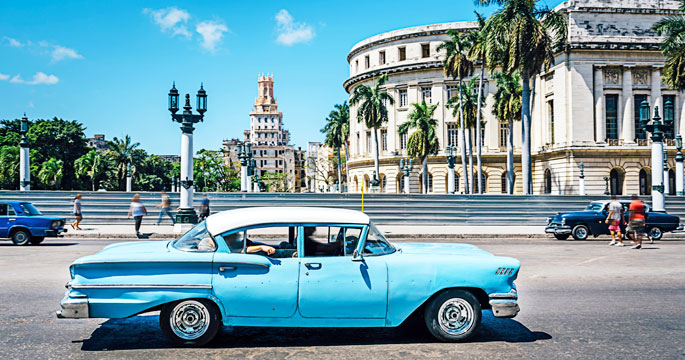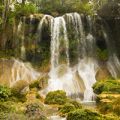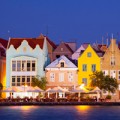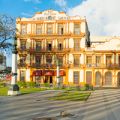Culture, history and nature come together at these memorable destinations
It takes something pretty special for a place to earn UNESCO’s designation as a World Heritage Site. Some islands have one or two, but Cuba leads the Caribbean with a total of nine. From historic districts and Spanish forts to lush forests, these are the places that belong on every visitor’s bucket list.
Camaguey City Center
The oldest inland city in Cuba dates back to 1528, when Spanish colonists established the island’s first farms. For centuries, the settlement remained a center of the region’s livestock and sugarcane industries. The historic city center is a maze of serpentine streets and narrow alleys, originally laid out to confound would-be invaders. Today, the district rewards walkers with hidden plazas, baroque churches, and an eclectic mix of galleries, cafes and neighborhood taverns.
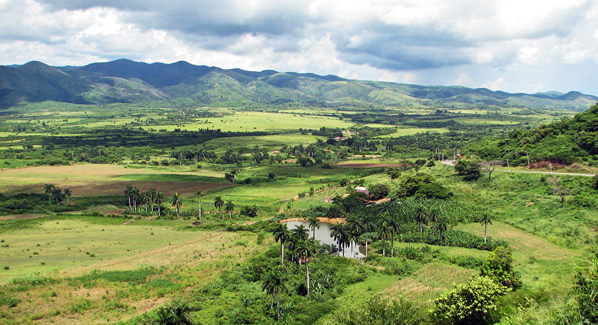
The Camaguey region is a center of agriculture and cattle farming. The namesake city, which is one of the oldest in Cuba, dates back to the days of the original Spanish colonists. Photo: Marika Bortolami/Compflight
Old Havana
Havana is one of the oldest European cities in the Western Hemisphere. Founded by the Spanish in 1519, it soon grew into one of the Caribbean’s major trading ports, and a center for shipbuilding. The narrow streets of the city center are lined with buildings in both Baroque and neoclassical styles, while the shore is lined with an extensive network of defensive installations dating from the 16th to the 19th centuries. These defenses include some of the oldest and largest stone fortifications still standing in the Americas.
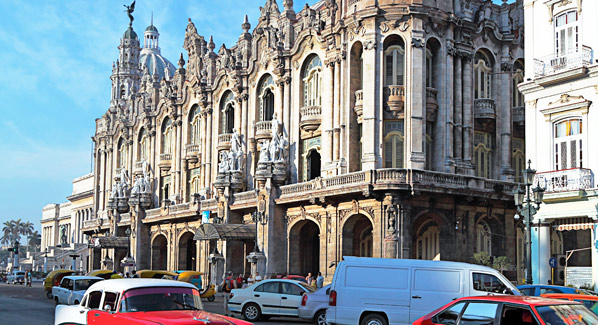
Havana’s Gran Teatro de La Habana Alicia Alonso was built by donations from Galacian immigrants to Havana, and originally served as a social center. It is now home to the Cuban National Ballet. Photo: Rostislav Ageev/iStock
San Pedro de la Roca Castle
Construction of the intricate complex of forts, bastions and batteries that overlook the entrance to Santiago de Cuba Bay took more than six decades. Commissioned in 1637 as a defense against raiding pirates, this massive series of multi-level stone fortifications was based on Italian and Renaissance designs. Over the centuries, the fortress was captured by pirates, repelled French forces, and exchanged fire with US warships during the Spanish American war. After falling into disrepair, it was restored in the 1960s and named a World Heritage Sites in 1997.
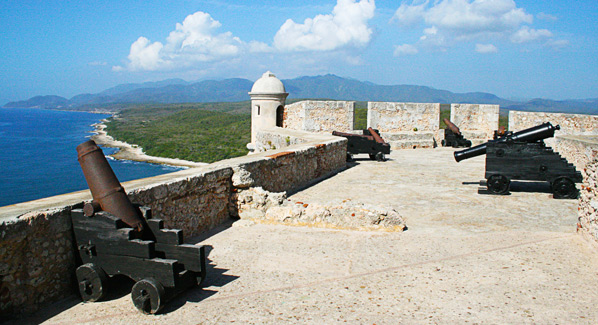
The cannons atop the stonewalls of San Pedro de la Roca Castle overlook the entrance to Santiago de Cuba Bay, and once defended the port from English and French privateers. Photo: Aldo van Zeelando/Compflight
Trinidad and the Valley de los Ingenios
Founded as one of Cuba’s first Spanish Colonial outposts, Trinidad rose to wealth and prominence with the sugar trade. The city overlooks the Valley de los Ingenious (Valley of the Sugar Mills), which at its peak was home to hundreds of sugar plantations worked by more than 10,000 slaves. Today the area is a living museum of the sugar era, with more than 75 former cane mills dotting the landscape. The oldest section of the city dates back 500 years, and is known for its narrow cobblestone streets and historic architecture.
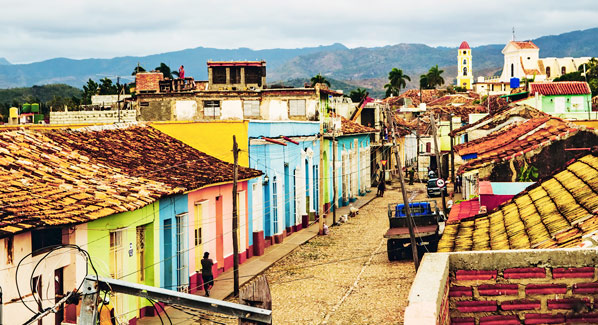
The colorful historic buildings of Trinidad have become a favorite destination for history buffs. One of Cuba’s oldest settlements, the city recently marked its 500th year. Photo: Marianna Smolina /iStock
Santiago del Cuba’s Coffee Plantations
In the eastern province of Santiago del Cuba, the historic remains of the island’s first coffee plantations cover the rugged foothills of the Sierra Maestra Mountains. In Turquino National Park, hikers can follow a network of mountain roads and bridges that connected plantations to coastal ports. The story of Cuba’s coffee culture is told at the Cafetal La Isabélica, a museum housed in a restored stone manor house built in the early 19th century by French growers, who escaped from Haiti to establish Cuba’s coffee industry.
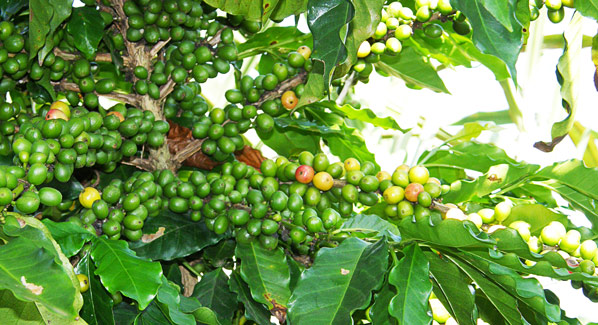
Coffee plants thrive in the foothills of Cuba’s Sierra Maestra Mountains. First brought to the island in 1748 by planters fleeting from Haiti, the crop soon became the island’s most lucrative export. Photo: Compflight
City Center, Cienfuegos
In contrast to the twisting streets and alleys of earlier Spanish cities, the center of Cienfuegos is arranged in a 25-block geometric grid based on the new-urbanism movement. The architecture represents the influences of French immigrants, who arrived from Bordeaux to settle this fertile agricultural region, which prospered with crops of sugar, cane, mango, tobacco and coffee. By the 1860’s Cienfuegos was one of Cuba’s most affluent cities.
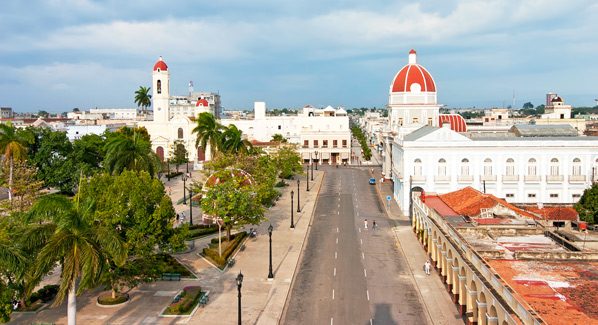
The historic district of Cienfuegos is laid out in the Spanish Enlightenment style. It contains the largest cluster of neoclassical structures in the Caribbean. Photo: Tony Zellenoff/iStock
Viñales Valley
In Cuba’s western Pinar del Rio province, the Sierra de los Organos mountain range encircles the fertile Viñales Valley. Cigar aficionados know this region as the source of the world’s finest tobacco, but it is also recognized for it’s unique geography and culture. The valley floor is punctuated with dome-like limestone outcroppings known as mogotes, which rise abruptly to heights of 1,000 feet. Traditional agricultural methods are still practiced in a unique culture that is a blend of indigenous peoples, Spanish conquerors and former African slaves. The village of Viñales is filled with well-preserved examples of Colonial architecture.
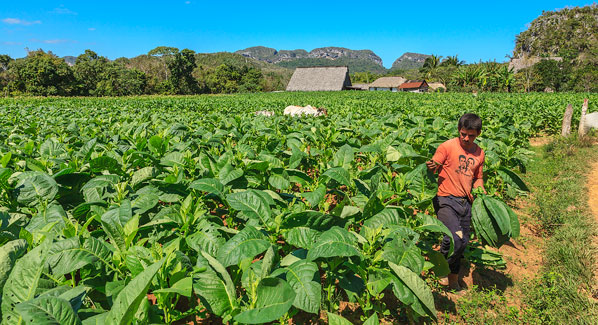
The rich soils of the Viñales Valley are famous for producing some of the finest cigar tobaccos in the world. The region is also known for its unique geological formations and indigenous culture. Photo: Flavio Valinari/iStock
Alejandro de Humboldt National Park
The uplands of Cuba’s eastern mountain harbor some of the most bio-diverse ecosystems of any island on earth, and the greatest in the Caribbean. This diversity is the result of adaptations forced by a hostile environment, in which underlying rocks are toxic to many plants. In all, more than 1,300 varietals of plants and 145 species of ferns have been identified in the Alejandro de Humboldt National Park. This includes more than 900 endemic to Cuba, and more that 300 found nowhere else.
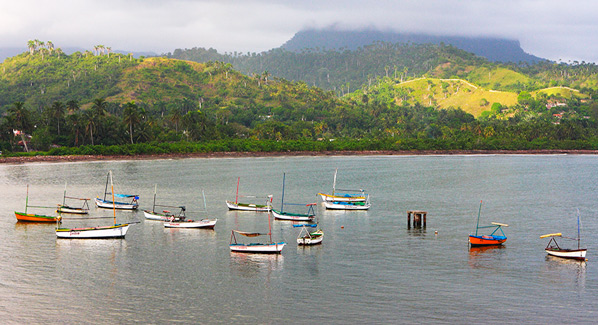
Clouds cover the summit of el Yunque de Baracoa. This 1,880-foot peak has been named a national monument. The upper slopes are home to the Caribbean’s most bio-diverse ecosystem. Photo: Tito Alfredo/Compflight
Desembarco del Granma National Park
The western edge of Cuba’s Granma province is a pristine landscape of giant sinkholes, canyons and caves, formed by uplifting geological forces that created the world’s largest coastal limestone terrace system. At Desembarco del Granma, the cliffs of Cabo Cruz form a singular coastal landscape that is not only geologically unique, but also of historic interest, as this was the site where Castro’s troops landed to begin their revolution.
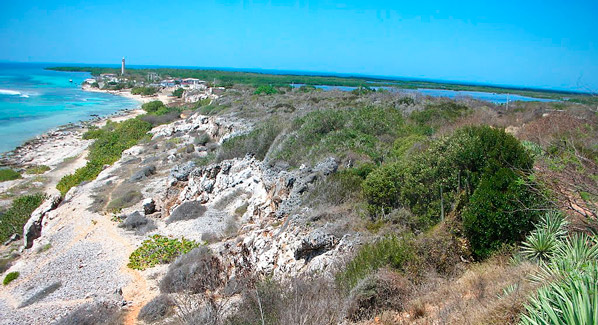
Cabo Cruz was sculpted by millenniums of geological uplift and sea level fluctuations. It is the world’s largest and best-preserved coastal limestone terrace system. Photo: Jose Batista/Flikr

